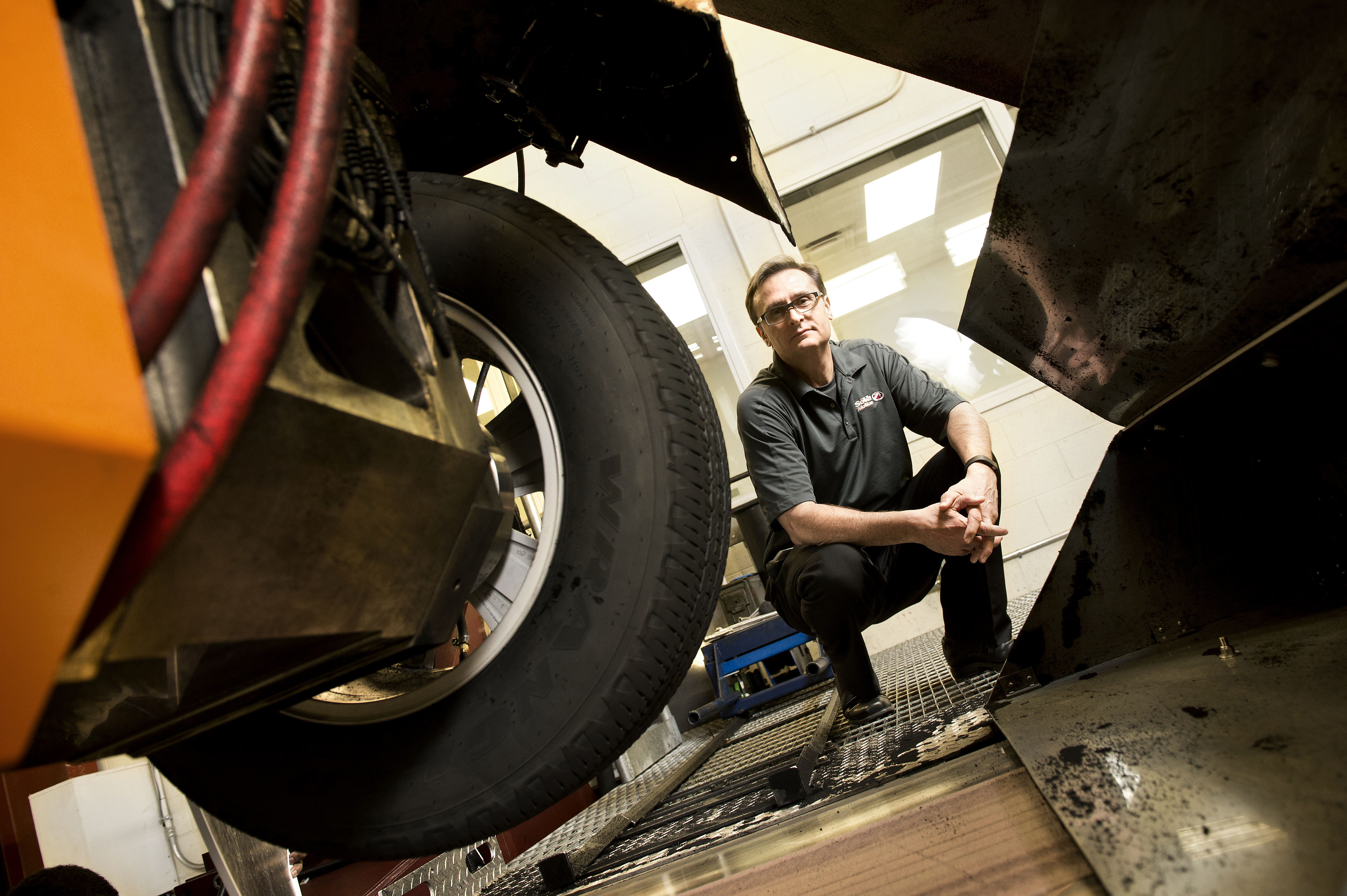Tire and vehicle research groups undergo new structure as work spreads to international levels

Tucked away in rural Alton, Virginia, are the National Tire Research Center and the Southern Virginia Vehicle Motion Labs, which include a research-affiliated company of Virginia Tech and the Virginia Tech Transportation Institute. There, Virginia Tech researchers and company employees put new vehicles and tires – both for highway and racing – through a variety of simulated and physical tests.
The test facilities have grown from only a handful of employees and national clients in the United States to two dozen employees and a roster of clients that include international customers, such as global motorsports teams and series.
Effective today, the two facilities will officially become encompassed under the Global Center for Automotive Performance Simulation, a new overall structure that reflects the international impact made by the tire testing and math modeling and computational research teams.
A third component, a virtual design and integration laboratory, will be added under the global center umbrella that expands upon current math modeling and simulation capabilities and offerings.
Heading the organization will be Frank Della Pia, who has served as executive director of the tire center since its opening in 2013.
“A very large percentage of our clients come to us from outside of North America; therefore, we are very much a company making a global impact,” said Della Pia. “The way we are now structured, GCAPS tells the industry that we are much more than a tire research and test facility. We offer a wide range of services and expertise, including tire characterization and test vehicle characterization and test tire and vehicle modeling and simulation. We offer services that cover the physical and the virtual, enabling a systematic approach to optimizing complex systems.”
On hand for the renaming event in Alton will be Tom Dingus, the Newport News Shipbuilding Professor in Virginia Tech’s Charles E. Via Jr. Department of Civil and Environmental Engineering and director of the transportation institute, and Timothy Sands, president of Virginia Tech. Halifax County economic development officials also are expected to attend.
“The Halifax Industrial Development Authority is excited about the expanded role and capability being brought to our county and the region through the Global Center for Automotive Performance Simulation project,” said Matt Leonard, executive director of the group. “Halifax IDA aggressively markets our local automotive sector and assets as a way to grow our economy and attract new industries. This project illustrates the technical capabilities of the Southern Virginia region, and its ready workforce.”
The original tire center was the result of a grant from the Virginia Tobacco Indemnification and Community Revitalization Commission. Matching funds were supplied by General Motors -- one of the other major users of the facility – with additional funding provided by Virginia Tech and the Institute for Advanced Learning and Research, the latter located in Danville.
The center started with 13 employees, a number that has since jumped to 26 and is expected to grow beyond 30 in the coming year, said Jonathan Darab, operations director for the Global Center for Automotive Performance.
The facilities will be dedicated to full performance testing – physical and virtual design integration -- of highway and racetrack vehicles, including tire wear and noise, fuel economy, comfort and safety of drivers, and lap time performance data for NASCAR and other motorsports teams and series.
The tire center already has made headlines for its work with Goodyear Racing -- the official supplier of race tires for NASCAR. There, tires are placed on a massive force and moment machine known as the LTRe.
As the $11.3 million, 14-ton machine turns and rotates up to speeds of 200 miles per hour, the fastest machine of its kind in the world, a massive arm holding the tire can mimic not just the common road, but any specific race track in the world, from the texture of the asphalt surface to the slant of the track. Test findings are then used by race teams on the track during race events.
Della Pia was part of a team that helped form the tire center, along with GM, Virginia Tech, and the Institute for Advanced Learning and Research. The $14 million tire center was created in 2010.
Its facility, along with SoVa Motion, are located adjacent to the Virginia International Raceway, the latter which includes a closed, curved track that has seen use from major American auto manufacturers, to NASCAR racing teams, to Virginia Tech’s own Blind Driver Challenge team in 2011 and 2012.
At SoVa Motion, vehicles ranging in size from a golf cart to a Humvee can be tested on a massive eight-post test rig, wheel force transducers, and simulator lab, simulating nearly any road condition and aerodynamics tests, said Darab.
“We set out to create jobs and to enhance the economy of Southern Virginia by revolutionizing the tire and vehicle industry and growing research opportunities,” said Dingus, the transportation institute director. “Less than two years into operation, this center has already exceeded its original goals. We have 11 sponsors that include global tire and auto manufacturers, auto suppliers, and motorsports teams, resulting in the addition of a third shift and nearly doubling the number of current jobs. Thanks to our engineers who work tirelessly and to the surrounding Southern Virginia community, we have become an internationally recognized company shaping the future of the automotive industry.”




